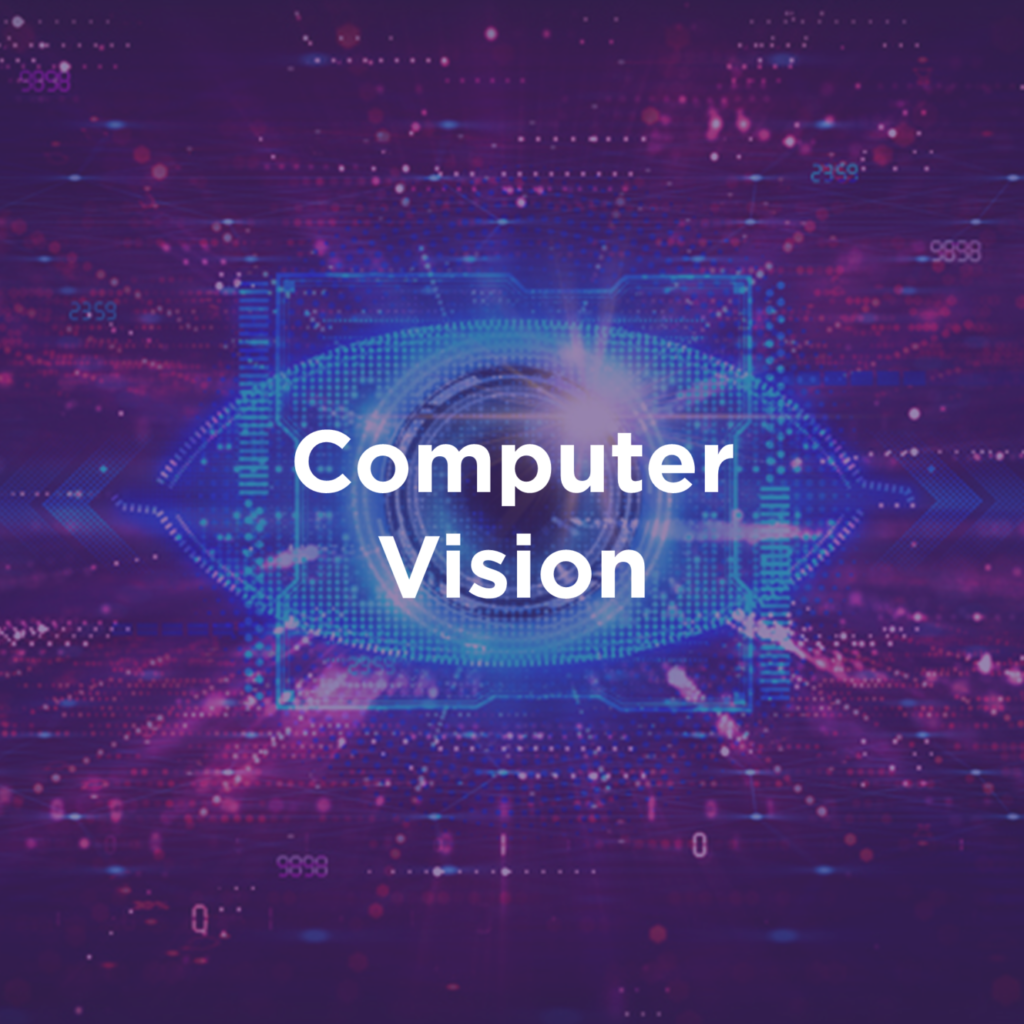
Introduction to Computer Vision
Computer vision is a field of artificial intelligence (AI) that enables machines to interpret and make decisions based on visual data. It involves the use of algorithms and models to process images and videos, extracting meaningful information to perform various tasks. The importance of computer vision has grown significantly as the demand for automation and intelligent systems increases across different sectors.
In the healthcare industry, computer vision is revolutionizing diagnostics and treatment. For instance, it aids in the early detection of diseases through medical imaging analysis, enabling more accurate and timely interventions. In the automotive sector, computer vision is a cornerstone of autonomous driving technology, where it is used for object detection, lane-keeping, and pedestrian recognition, ensuring safer and more efficient transportation systems.
Security is another domain where computer vision tools play a crucial role. Surveillance systems equipped with advanced computer vision capabilities can detect unusual activities, recognize faces, and even predict potential threats, thus enhancing public safety. Beyond these industries, computer vision applications can be found in retail for customer behavior analysis, in agriculture for crop monitoring, and in manufacturing for quality control.
As the field of computer vision continues to expand, the development and utilization of specialized tools and libraries have become essential. These tools, such as OpenCV, YOLO, and Detectron2, provide the necessary frameworks and pre-trained models that streamline the process of building and deploying computer vision applications. They offer robust functionalities that cater to various aspects of image and video analysis, making them invaluable resources for researchers and developers alike.
The advancements in computer vision tools not only accelerate innovation but also lower the barrier of entry for new practitioners. By leveraging these tools, individuals and organizations can achieve more sophisticated and accurate visual data processing, driving forward the capabilities and applications of computer vision in our technology-driven world.
Overview of OpenCV
OpenCV, which stands for Open Source Computer Vision Library, is an influential open-source software library for computer vision and machine learning. Initially developed by Intel in 1999, OpenCV has grown significantly, becoming one of the most widely recognized tools in the computer vision domain. The library supports a wide range of applications, including image processing, object detection, facial recognition, and more.
OpenCV’s development history is marked by its transition from a research project to a robust, scalable library. Since its inception, it has been consistently enhanced and expanded by a global community of developers. This collaborative effort has allowed OpenCV to evolve and stay relevant in the rapidly advancing field of computer vision.
One of the main features that set OpenCV apart is its comprehensive suite of tools and functions. The library provides over 2,500 optimized algorithms for various tasks, from basic image processing techniques to sophisticated machine learning models. OpenCV supports multiple programming languages, including C++, Python, Java, and MATLAB, making it accessible to a broad range of developers and researchers.
Another significant advantage of OpenCV is its extensive documentation. The library offers detailed guides, tutorials, and examples that help users understand and implement its features effectively. This thorough documentation, combined with an active user community, ensures that both beginners and experienced professionals can leverage OpenCV to its full potential.
The active community surrounding OpenCV is another critical factor contributing to its success. With numerous forums, discussion groups, and online resources, users can easily seek assistance, share knowledge, and collaborate on projects. This vibrant ecosystem fosters continuous improvement and innovation, cementing OpenCV’s position as a staple in the computer vision community.
Overall, OpenCV’s rich history, extensive feature set, and supportive community make it an indispensable tool for anyone working in computer vision. Its ongoing development and adaptability ensure that it will remain a cornerstone of the field for years to come.
Key Features and Use Cases of OpenCV
OpenCV, or Open Source Computer Vision Library, is a comprehensive toolkit that provides a rich set of features for computer vision and image processing tasks. One of its most prominent features is the extensive support for image processing. OpenCV allows for a wide range of operations on images, including filtering, transformation, and morphological operations. These capabilities make it a versatile tool for applications requiring image enhancement, feature extraction, and object detection.
Another significant feature of OpenCV is its video capture and analysis capabilities. The library supports real-time video capturing, which is essential for applications like surveillance systems and live video analytics. OpenCV can process and analyze video frames in real-time, enabling functionalities such as motion detection, object tracking, and video stabilization. These features are particularly useful in security and monitoring systems where timely and accurate video analysis is critical.
OpenCV also boasts robust machine learning capabilities, integrating seamlessly with popular machine learning libraries like TensorFlow and PyTorch. This integration allows developers to implement complex algorithms for tasks like image classification, object detection, and facial recognition. OpenCV’s machine learning module includes pre-trained models and tools for training custom models, making it accessible for both beginners and experts in the field.
In real-world applications, OpenCV has been successfully implemented across various industries. For instance, in facial recognition systems, OpenCV’s face detection and recognition algorithms are widely used for security and authentication purposes. In the medical field, OpenCV aids in medical imaging by enhancing and analyzing MRI and CT scan images, facilitating accurate diagnosis and treatment planning. Additionally, OpenCV plays a crucial role in the development of autonomous vehicles, where it is used for tasks such as lane detection, obstacle recognition, and driver assistance systems.
Overall, OpenCV’s extensive features and diverse use cases make it a cornerstone tool in the realm of computer vision, driving innovation and efficiency across multiple domains.
Introduction to YOLO (You Only Look Once)
YOLO, or You Only Look Once, represents a groundbreaking advancement in the field of computer vision, particularly in real-time object detection systems. Developed by Joseph Redmon and his team, YOLO was first introduced in 2016 and has since undergone several iterations, each enhancing its accuracy and speed. The primary goal of YOLO is to detect objects in images and video streams with unparalleled efficiency, making it an invaluable tool for various applications such as autonomous driving, security surveillance, and robotics.
Unlike traditional object detection methods that often use a two-stage process, YOLO employs a single, end-to-end neural network that predicts both bounding boxes and class probabilities directly from full images. This unique approach allows YOLO to process images in real-time, achieving impressive speeds without compromising on accuracy. The system divides an image into a grid and assigns bounding boxes and confidence scores to each grid cell, enabling the detection of multiple objects within a single frame.
YOLO’s innovative architecture has several advantages over other object detection techniques like region-based convolutional neural networks (R-CNN) and Single Shot MultiBox Detector (SSD). While R-CNNs involve a more complex pipeline that includes generating region proposals and classifying each one, YOLO’s streamlined process significantly reduces computation time. Moreover, YOLO’s unified model minimizes the chances of overlapping detections and false positives, providing a more accurate representation of the objects within an image.
As a state-of-the-art tool, YOLO has continued to evolve, with its latest versions, such as YOLOv4 and YOLOv5, offering enhanced performance metrics. These iterations introduce improvements in the underlying algorithms, making YOLO faster and more reliable. Consequently, YOLO remains a preferred choice for developers and researchers seeking efficient and effective object detection solutions.
Key Features and Use Cases of YOLO
YOLO, short for “You Only Look Once,” is a standout tool in the realm of computer vision, primarily due to its impressive speed and accuracy in object detection. Unlike traditional methods that apply a classifier to an image at multiple locations and scales, YOLO reframes object detection as a single regression problem. This novel approach allows YOLO to process images in real-time, making it a highly efficient solution for numerous applications.
One of the core features of YOLO is its ability to predict bounding boxes and class probabilities directly from full images in one evaluation. This significantly reduces computation time and enhances processing speed. YOLO’s architecture is designed to achieve high accuracy while maintaining rapid detection rates, a balance that is critical for real-time applications.
YOLO’s real-time processing capabilities make it an ideal choice for surveillance systems. In security and monitoring scenarios, the ability to detect and track objects instantaneously is paramount. YOLO can efficiently identify unauthorized access, monitor sensitive areas, and track movements, thereby enhancing security measures.
Another vital application of YOLO is in traffic monitoring. With the increasing need for intelligent transportation systems, YOLO can be employed to analyze traffic flow, detect vehicles, and monitor congestion. Its swift and accurate detection capabilities enable traffic management authorities to make informed decisions swiftly, improving overall traffic efficiency and reducing the likelihood of accidents.
In the field of robotics, YOLO’s utility is equally significant. For instance, autonomous robots rely on precise and quick object detection to navigate their environments safely. YOLO’s robust detection algorithms enable these robots to recognize obstacles, identify objects of interest, and interact with their surroundings effectively. This makes YOLO indispensable for applications ranging from warehouse automation to advanced robotic research.
Overall, YOLO’s blend of speed and accuracy, coupled with its versatility in various use cases, underscores its position as a leading tool in the computer vision landscape. Whether in surveillance, traffic monitoring, or robotics, YOLO continues to push the boundaries of what is possible in real-time object detection.
Detectron2, developed by Facebook AI Research (FAIR), is a leading-edge software system designed to implement state-of-the-art object detection algorithms. This open-source platform is a significant advancement over its predecessor, Detectron, offering a more flexible and efficient framework for computer vision researchers and practitioners alike. Built on the PyTorch deep learning library, Detectron2 leverages the robustness of PyTorch’s dynamic computational graph and modular design, facilitating easier experimentation and deployment in real-world applications.
The development of Detectron2 was driven by the need to enhance the capabilities and performance of object detection systems. Object detection, a critical task in computer vision, involves identifying and localizing objects within an image. Detectron2 excels in this domain by providing an array of cutting-edge algorithms, including Faster R-CNN, Mask R-CNN, and RetinaNet, among others. These algorithms have been extensively tested and validated, ensuring their reliability and accuracy in various scenarios.
Detectron2’s importance in the research community cannot be overstated. It has been widely adopted due to its comprehensive documentation, ease of use, and extensibility. Researchers can quickly build and test new models, thanks to the platform’s modular architecture. This flexibility is crucial for advancing the field of computer vision, as it allows for rapid prototyping and iterative improvements. Moreover, Detectron2’s integration with other tools and libraries, such as COCO API and DALI, further enhances its utility and appeal.
One of the standout features of Detectron2 is its support for a wide range of datasets and benchmarks, including COCO, LVIS, and Cityscapes. This broad compatibility ensures that models developed using Detectron2 can be evaluated against industry-standard metrics, promoting transparency and comparability in research findings. Additionally, the active community surrounding Detectron2 provides valuable support and contributes to its continuous improvement, making it a pivotal tool in the ever-evolving landscape of computer vision.
Key Features and Use Cases of Detectron2
Detectron2, an advanced open-source library developed by Facebook AI Research, stands out in the realm of computer vision tools due to its modular design, high performance, and extensive support for diverse object detection models. One of the primary features of Detectron2 is its modular architecture, which allows users to easily customize and extend the framework to suit their specific needs. This flexibility is particularly beneficial for researchers and developers who require tailored solutions for complex computer vision tasks.
Another significant attribute of Detectron2 is its high performance. The library is optimized for speed and efficiency, making it suitable for both real-time and large-scale applications. Detectron2 leverages the latest advancements in deep learning and hardware acceleration, ensuring that it delivers state-of-the-art results with minimal latency.
Detectron2 supports a wide range of object detection models, including Faster R-CNN, Mask R-CNN, and RetinaNet. This extensive model support enables users to tackle various object detection challenges, from simple tasks such as identifying everyday objects in images to more complex scenarios like segmenting objects in crowded scenes. The versatility of Detectron2 makes it a preferred choice for many computer vision projects.
In practice, Detectron2 has been employed in numerous research projects, commercial applications, and academic studies. For instance, researchers have used Detectron2 to develop advanced autonomous driving systems, where real-time object detection and segmentation are crucial for safe navigation. In the commercial sector, companies have integrated Detectron2 into their surveillance systems to enhance security and monitor activities more effectively. Additionally, academic institutions have utilized Detectron2 in various studies to explore new frontiers in computer vision and artificial intelligence.
Overall, the key features of Detectron2, including its modular design, high performance, and comprehensive model support, make it an indispensable tool for a wide array of computer vision applications. Whether for research, commercial use, or academic purposes, Detectron2 continues to drive innovation and deliver cutting-edge solutions in the field of computer vision.
Conclusion and Future Trends in Computer Vision
The blog post has explored three significant tools in the field of computer vision: OpenCV, YOLO, and Detectron2. OpenCV stands out as a versatile library for image processing and computer vision tasks, offering a broad range of functionalities that are accessible to both beginners and experts. YOLO (You Only Look Once) has revolutionized object detection with its real-time capabilities and high accuracy, making it a go-to solution for applications requiring swift and precise object recognition. Detectron2, developed by Facebook AI Research, provides an advanced platform for implementing state-of-the-art object detection and segmentation models, facilitating complex computer vision projects with ease.
As we look towards the future, several trends are poised to shape the evolution of computer vision technologies. Advancements in deep learning continue to push the boundaries of what is possible, enabling the development of more sophisticated and accurate models. Improved real-time processing capabilities are expected to enhance the performance of computer vision applications, making them more efficient and practical for real-world use. Additionally, the integration of artificial intelligence with computer vision technologies is set to open new avenues for innovation, leading to smarter and more adaptive systems.
It is crucial for professionals and enthusiasts in the field to stay abreast of these developments and continuously explore the potential of tools like OpenCV, YOLO, and Detectron2. By doing so, they can leverage the latest advancements to build more robust and intelligent computer vision solutions. The dynamic nature of this field promises exciting opportunities and challenges, making it an area worth watching closely.
In conclusion, the capabilities of OpenCV, YOLO, and Detectron2 underscore the transformative impact of computer vision technologies. As these tools evolve and new trends emerge, the potential applications will expand, offering unprecedented possibilities for innovation across various industries. Readers are encouraged to delve deeper into these tools and stay updated with the latest trends to fully harness the power of computer vision.



